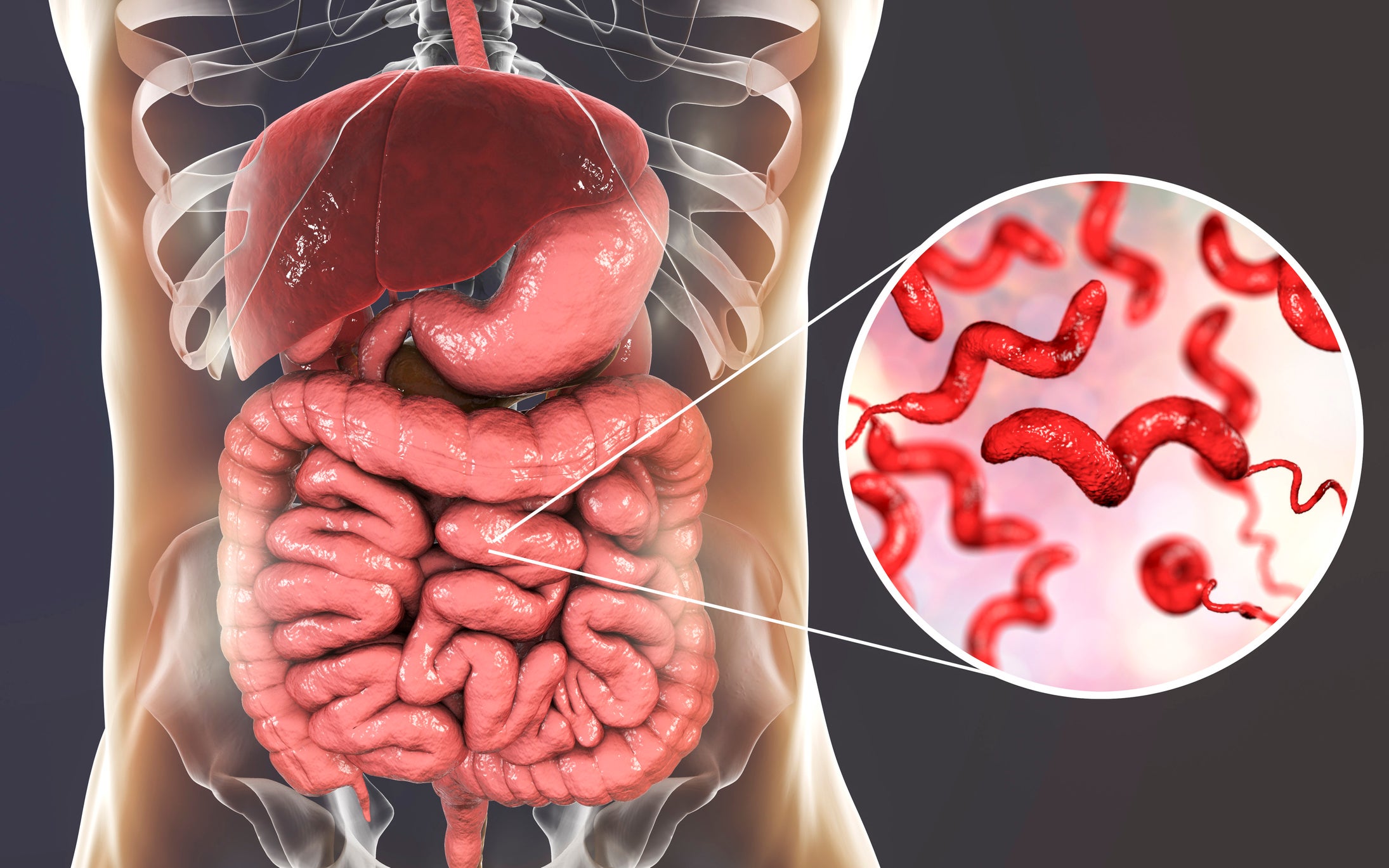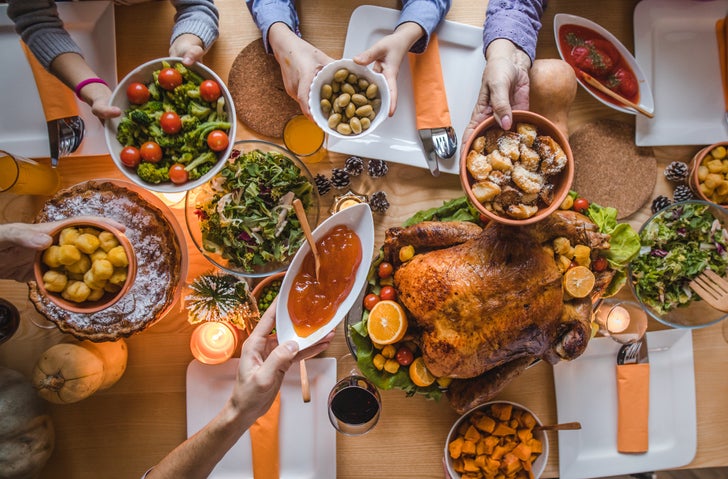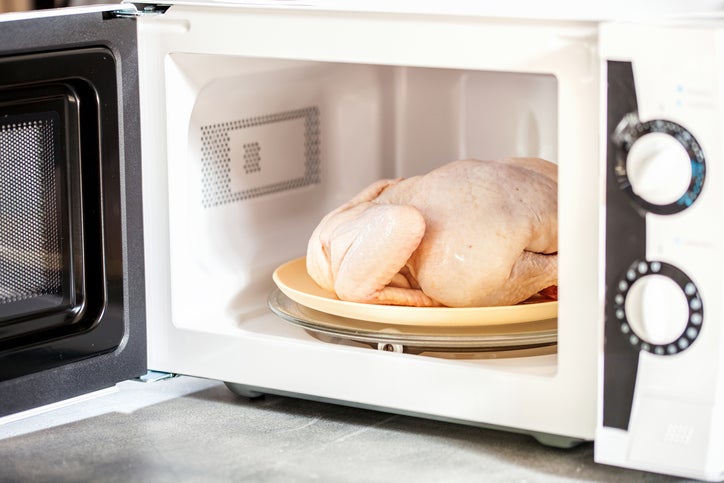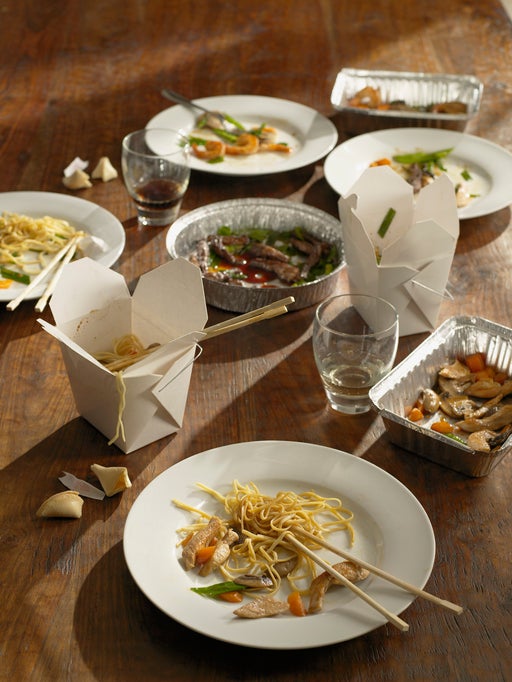Food Safety From Start to Finish
November 1, 2022
By: Marissa Parminter MS, RD, LDN
Categories: Gastroenterology, Primary Care, Urgent Care
The holidays are here again, and that means lots of merrymaking — with food. If you’re preparing delicious meats and treats for others to enjoy, there’s more to consider than tantalizing tastes, scintillating aromas, visual appeal and delightful textures.

The foremost consideration is food safety during handling, preparation and storage since data collected from the CDC reveals that the holidays are a time when foodborne illnesses spike.
Food poisoning from foodborne illnesses can impact everyone, regardless of age or medical history. Often, we may not even realize that some of the things we commonly do when preparing food may be putting us at greater risk. However, there are many steps that can and should be taken to protect you, your friends and family from illness.
Understanding the Danger Zone
Germs grow best when the temperature of a food is between 40°F and 140°F — this is called the danger zone. When a food is outside of the danger zone at a safe temperature, many germs are unable to grow or are killed. Therefore, it is essential to limit exposure to the danger zone, and keep your food at safe temperatures throughout every step of the cooking process.
Thawing
There are only a few ways that food, especially meats, can safely be thawed after being in the freezer.
Hot tip: simply putting it out on the counter is not one of them! This is because the temperature of the food cannot be controlled on the counter. And when the food gets to room temperature, this puts it right in the middle of the danger zone.
Thaw your food safely in the following ways:
- In the refrigerator (takes about 24 hours depending on the food)
- Submerged in cold water in a leak-proof bag or container, replacing the water every 30 minutes (takes about 1-3 hours depending on the food)
- In the microwave, immediately before cooking (can be very fast — a few minutes)

Remember, many foods can also be cooked directly from frozen, but may require a longer cooking time and/or a different cooking temperature.
Preparing Food
Frequently washing our hands with soap and warm water is essential all the time, but it is especially important during food preparation. Always wash your hands before you begin food prep, after completing food prep, after handling raw animal products (meat, poultry, eggs, seafood) and before you eat. Don’t forget to also clean your surfaces frequently with hot, soapy water or an antibacterial cleaning product.
What foods should be washed?
All fruits and vegetables should be washed in cold, tap water prior to eating or further preparation. This includes foods with peels that you will not be eating but will be cutting: melons, avocados, etc.). Otherwise, the knife can transfer germs on the outside of the food to the inside of the food. Some foods may only require a short rinse, while some may require scrubbing if there is visible dirt, such as on potatoes. It is not recommended to use commercial produce washes, soap or other household detergents to clean produce.
What does not need to be washed?
Products such as meat, poultry and eggs should NOT be washed prior to cooking. Doing so can spread germs to surfaces in your kitchen where they may get on other foods and potentially cause illness. Cooking these foods thoroughly will kill any germs.
Avoiding Cross Contamination:
Throughout the food preparation process, separate raw meats from foods that will not be cooked such as fruits, vegetables or breads. Use a different cutting board and knife for each, or wash these thoroughly with hot water and soap prior to using them for produce. Ensure you are not putting cooked meats on the same surfaces that held raw meats.
Cooking
A meat thermometer is the best way to ensure you are cooking meats and other dishes to their safe minimum internal temperature. Review this chart from foodsafety.gov to ensure you are cooking food safely:
| Food | Type | Internal Temperature (°F) |
| Beef, bison, veal, goat and lamb | Steaks, roasts, chops | 145 Rest time: 3 minutes |
| Ground meat and sausage | 160 | |
| Casseroles | Meat and meatless | 165 |
| Chicken, turkey and other poultry | All: whole bird, breasts, legs, thighs, wings, ground poultry, giblets, sausage and stuffing inside poultry | 165 |
| Eggs | Raw eggs | Cook until yolk and white are firm |
| Egg dishes (such as frittata, quiche) | 160 | |
| Ham | Raw ham | 145 Rest time: 3 minutes |
| Precooked ham (to reheat) | 165 Note: Reheat cooked hams packaged in USDA-inspected plants to 140°F |
|
| Leftovers | Any type | 165 |
| Pork | Steaks, roasts, chops | 145 Rest time: 3 minutes |
| Ground meat and sausage | 160 | |
| Rabbit and venison | Wild or farm-raised | 160 |
| Seafood | Fish (whole or filet), such as salmon, tuna, tilapia, pollock, bass, cod, catfish, trout, etc. | 145 or cook until flesh is no longer translucent and separates easily with a fork |
| Shrimp, lobster, crab and scallops | Cook until flesh is pearly or white and opaque | |
| Clams, oysters, mussels | Cook until shells open during cooking |
Cooling and Leftovers
Perishable foods, such as leftovers, meat, dairy, seafood, cut fruit and some vegetables, should be refrigerated within 2 hours after cooking or purchasing at the store. If the food is exposed to external temperatures >90°F (such as at a cookout or in a hot car), it should be refrigerated within 1 hour. However, it is always best to get these foods into the refrigerator as quickly as possible – even if leftovers are still hot or warm.
Putting leftovers in the refrigerator in several shallow containers is safer than putting them in one large and tall container. This is because the food will cool to 40°F and move out of the danger zone faster when packaged in smaller quantities.

Depending on the food, leftovers can be safely eaten for about 3-4 days. After that point, risk of illness increases and it is best to freeze them or throw them away.
Eating Out
- Check your local Health Department’s website for restaurant inspection scores.
- Be careful when ordering raw or purposely undercooked foods such as fish, oysters, red meats, etc.
- Send back any unintentionally undercooked foods, such as chicken, turkey, etc.
- Ensure hot foods are being served hot and cold foods are being served cold.
- Self-serve food stations such as salad bars and buffets carry increased risk due to potentially inconsistent holding temperatures, length of holding times and issues related to customers serving themselves.
- Avoid unpasteurized dairy products and foods made with unpasteurized products.
Preventing Illness Among People at Higher Risk
There are a few groups that may be more likely to get sick from foodborne illnesses:
- Adults aged 65+
- Children younger than age 5
- Pregnant people
- People with diseases that suppress their immune system, including cancer, diabetes, chronic kidney disease or HIV/AIDS
It is important that people within these groups pay even closer attention to their food preparation and cooking practices to avoid illness.
Staying Safe
In addition to all of the recommendations listed above, stay alert to news regarding food recalls and follow the recommended steps if you have that food or ingredient in your home.
While there may be many parts to good food safety practice, these processes are often very easy to begin. The food you serve yourself and your family is already nourishing and delicious, ensure it is also safe.
MyCare 365 Can Help
Do you have symptoms of food poisoning or another foodborne illness, such as cramping, nausea, vomiting or diarrhea?
WakeMed MyCare 365 Primary & Urgent Care can help. We’re available 365 days a year to provide same-day, walk-in care for routine medical conditions, illness and injuries. Reserve your spot online or just walk-in to one of our several conveniently located offices.
References:
foodsafety.gov
cdc.gov/foodsafety
fsis.usda.gov/food-safety